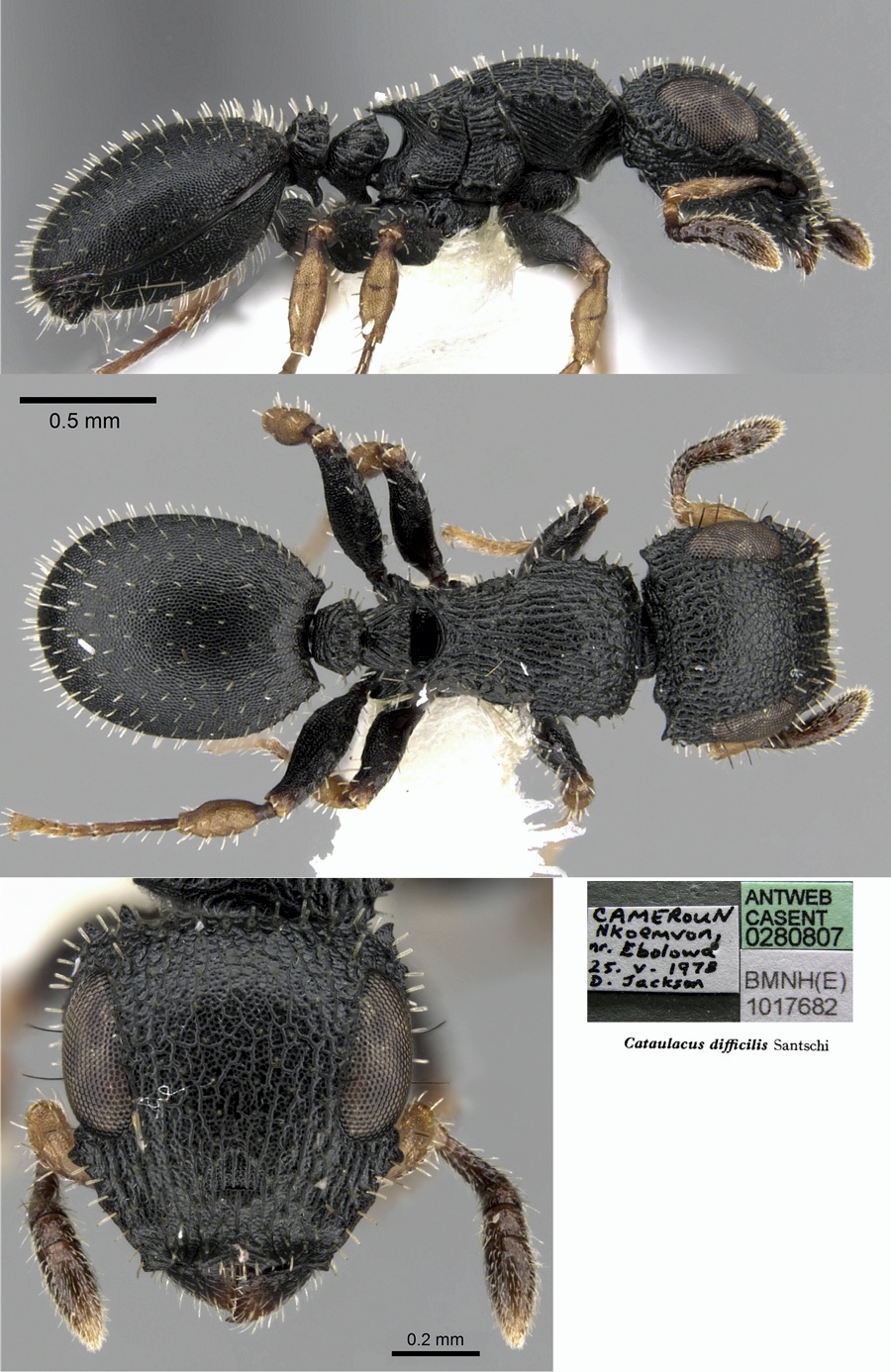Cataulacus taylori Bolton
  Type location Nigeria
(Bolton, 1982: 364, not illustrated, worker) Type location Nigeria
(Bolton, 1982: 364, not illustrated, worker)  . .
Bolton's description is at  . .
|
 First
description (as Cataulacus difficilis, Taylor, 1979: 9).
WORKER. TL 3.33 mm, HL 0.86, HW 0.78, SL 0.44, PW 0.64 (in my guide ) First
description (as Cataulacus difficilis, Taylor, 1979: 9).
WORKER. TL 3.33 mm, HL 0.86, HW 0.78, SL 0.44, PW 0.64 (in my guide )
Occipital corners of head each with a pair of small, acute triangular
teeth. The dorsum of the head is reticulate-rugose with the rugae
longitudinal anteriorly. The dorsum of the alitrunk is longitudinally
rugose, and the first gastral tergite is reticulate-punctate. All
dorsal surfaces have stout, blunt erect hairs. The sides of the
pronotum are marginate and strongly denticulate, but the remainder of
the alitrunk is more weakly and sparsely denticulate. The propodeal
spines are short and acute. There is a strongly developed
mesokatepisternal tooth (on the lower part of the lateral alitrunk
overhanging the front tibia), which is triangular, acute and visible
when the alitrunk is viewed from above. The subpetiolar process is
simple and the subpostpetiolar process long and digitiform.
Bolton separated the holotype and a paratype found at
the Cocoa Research Institute of Nigeria, Idi Ayunre, but from different
locations on the plantation. I took the first worker from the Onipe 1/1
block, the first Nigerian record of what I identified (from Bolton,
1974a) as Cataulacus
difficilis. The latter was separated by Bolton on the basis of
a single specimen, taking the mesokatepisternal tooth as definitive.
The collection details given by Bolton, however, do not match my own
field note book, especially as I had stopped collecting before
24.v.1976 and appear not to have been in the field on 25.vii.1975.
|
 The
photomontage of a worker from Cameroun, on Antweb as "difficilis" (but not
listed in Bolton, 1982, where the distribution in the key still has
solely "Benin Republic"), is collated from http://www.antweb.org/specimen.do?name=casent0280807 The
photomontage of a worker from Cameroun, on Antweb as "difficilis" (but not
listed in Bolton, 1982, where the distribution in the key still has
solely "Benin Republic"), is collated from http://www.antweb.org/specimen.do?name=casent0280807
It is a match for the taylori workers shown above.
|